Names link to more information
on identification and management.
Click on photos to enlarge

European red mite eggs
Identification
tip: Globular and red with a slender stalk (stipe)
rising from the top center.
|
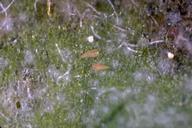
Pear rust mite
Identification tip: Tiny wedge-shaped, tan females overwinter
beneath bud scales, mostly on 1- to 2-year-old wood. |
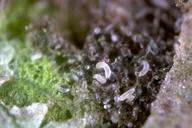
Pearleaf blister mite (adults,
nymphs)
Identification tip: Tiny with a white, striated, long
and slender body. |
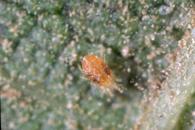
Twospotted spider mite adult
Identification tip: Overwintering females orange, and
found under bark scales on trees and in trash on the ground. |
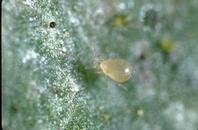
Predatory
mite (spider mite natural enemy)
Identification tip: Larger than twospotted spider mite,
pear shaped and ranges from translucent cream to amber-red. |
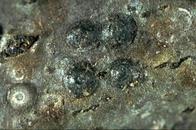
San Jose scale black cap
stage
Identification tip: Overwinters in black cap stage.
Small with roundish black cover. |
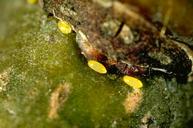
Pear psylla eggs
Identification tip: Tiny, elongated yellowish eggs
laid on or near fruit spurs starting in late January to mid-February. |
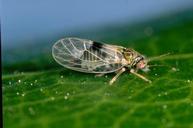
Pear psylla adult
Identification tip: Resembles tiny cicada; transparent
wings held rooflike over dark to reddish brown body when
at rest; wings with dark spot on middle of top edge. |
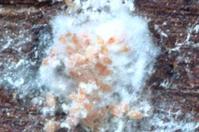
Mealybugs (grape, obscure)
egg mass
Identification tip: Yellowish to orange eggs laid
on a white, cottony mass located under the bark. |

Mealybugs (grape, obscure)
crawlers
Identification tip: Brownish orange, soft, segmented,
oval bodies; lightly coated with white waxy secretion.
|
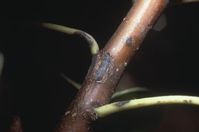
Pear scab lesions
Identification tip: Dark, oval, sunken lesions on
one-year- old shoots and spurs. |
|


